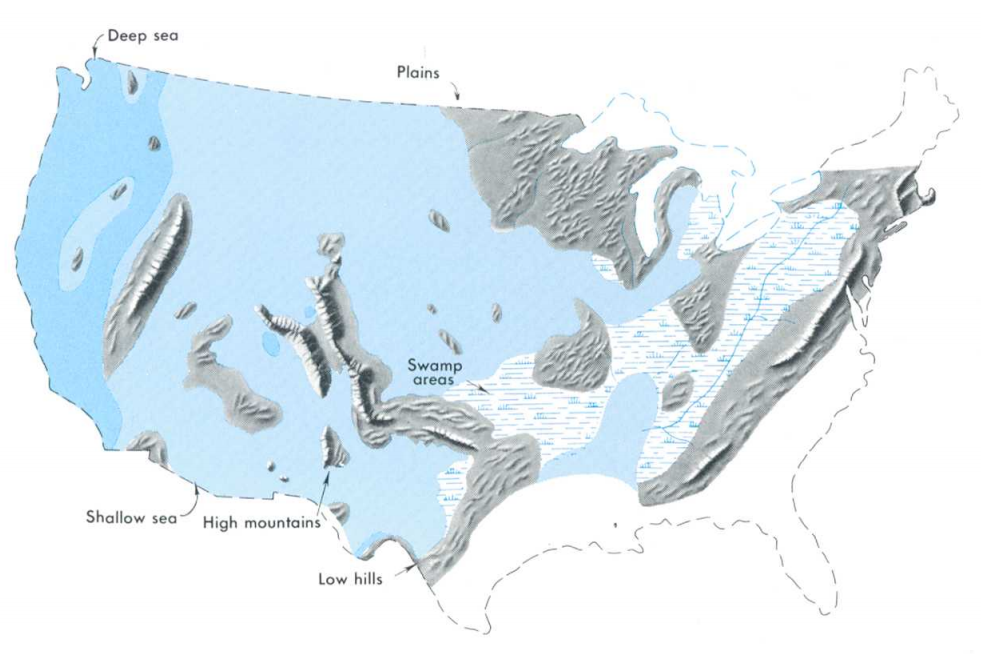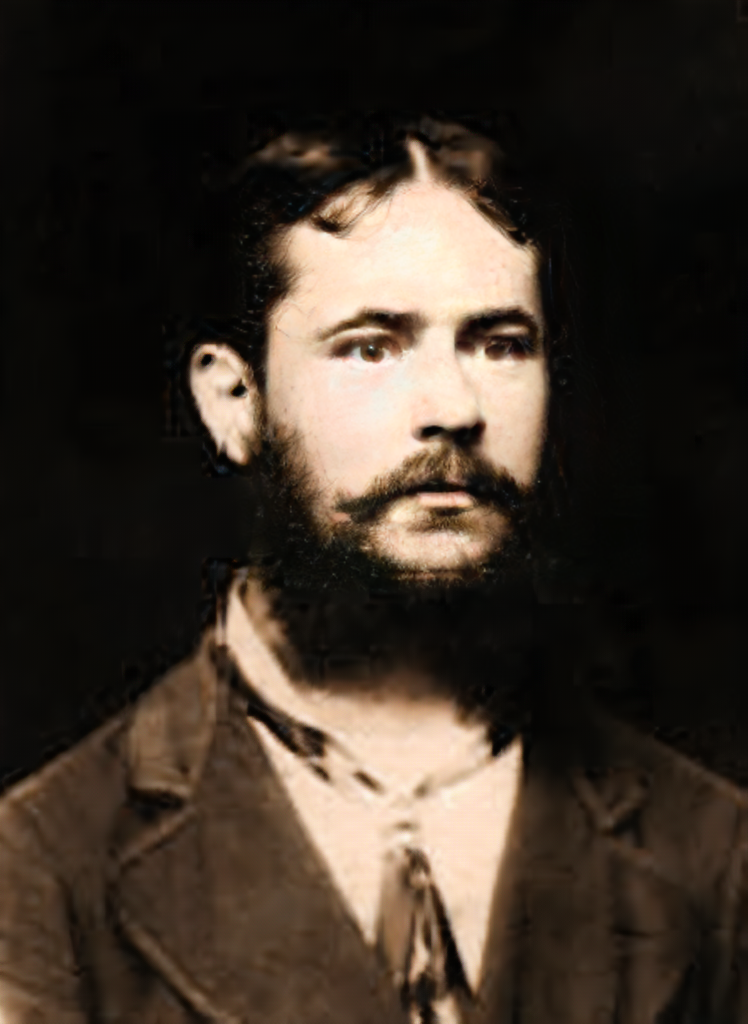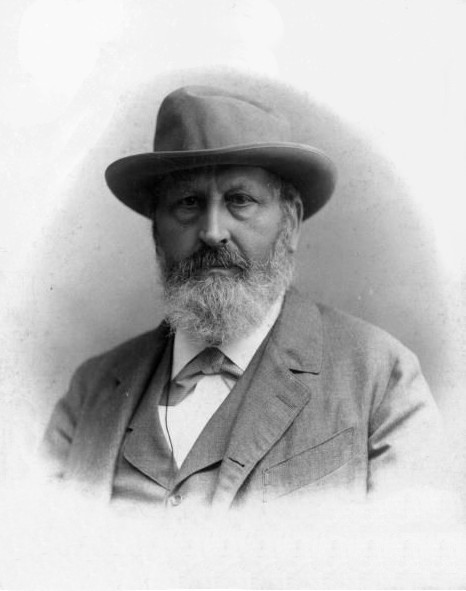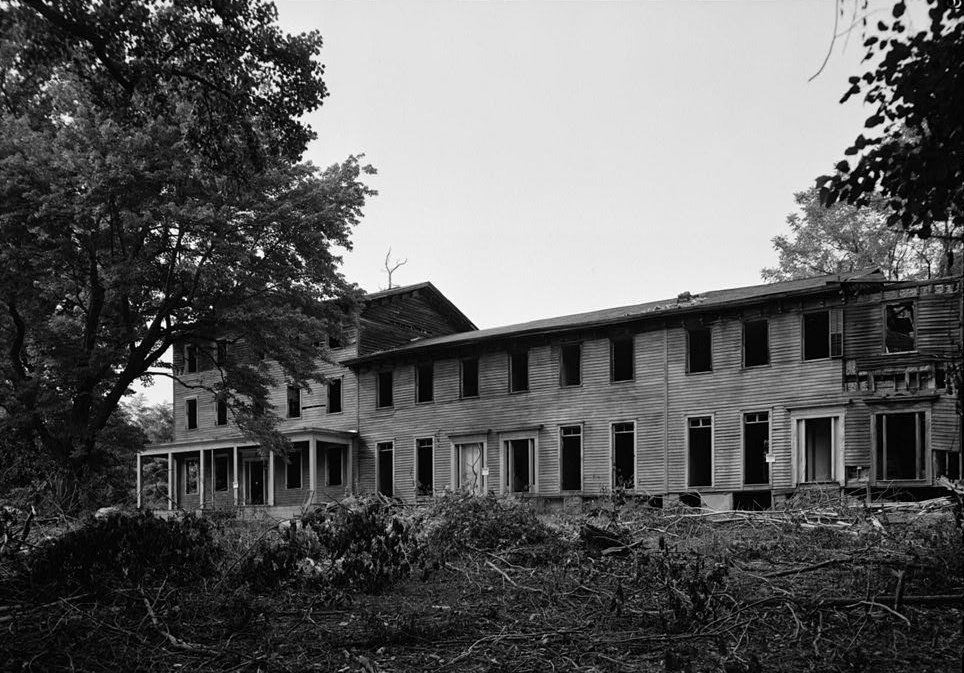|
Antonio Snider-Pellegrini
Antonio Snider-Pellegrini (1802–1885) was a French geographer and geologist who theorized about the possibility of continental drift, anticipating Wegener's theories concerning Pangaea by several decades. In 1858, Snider-Pellegrini published his book, ''La Création et ses mystères dévoilés'' ("The Creation and its Mysteries Unveiled"). He proposed that all of the continents were once connected together during the Pennsylvanian Period. He based this theory on the fact that he had found plant fossils in both Europe and the United States that were identical. He found matching fossils on all of the continents. Also Pellegrini proposed a large change in the Earth's size during the time of the Biblical Genesis account. He was a follower of Charles Fourier and is also remembered for his attempt to establish a Phalanstèry near Matagorda, Texas. Pellegrini was preceded by Abraham Ortelius Abraham Ortelius (; also Ortels, Orthellius, Wortels; 4 or 14 April 152728 ... [...More Info...] [...Related Items...] OR: [Wikipedia] [Google] [Baidu] |
Trieste
Trieste ( , ; ) is a city and seaport in northeastern Italy. It is the capital and largest city of the Regions of Italy#Autonomous regions with special statute, autonomous region of Friuli-Venezia Giulia, as well as of the Province of Trieste, regional decentralization entity of Trieste. Trieste is located at the head of the Gulf of Trieste, on a narrow strip of Italian territory lying between the Adriatic Sea and Slovenia; Slovenia lies close, at approximately east and southeast of the city, while Croatia is about to the south of the city. The city has a long coastline and is surrounded by grassland, forest, and karstic areas. As of 2025, it has a population of 198,668. Trieste belonged, as Triest, to the Habsburg monarchy from 1382 until 1918. In the 19th century, the monarchy was one of the Great Powers of Europe and Trieste was its most important seaport. As a prosperous trading hub in the Mediterranean region, Trieste grew to become the fourth largest city of the Aust ... [...More Info...] [...Related Items...] OR: [Wikipedia] [Google] [Baidu] |
Pennsylvanian Period
The Pennsylvanian ( , also known as Upper Carboniferous or Late Carboniferous) is, on the ICS geologic timescale, the younger of two subperiods of the Carboniferous Period (or the upper of two subsystems of the Carboniferous System). It lasted from roughly . As with most other geochronologic units, the rock beds that define the Pennsylvanian are well identified, but the exact date of the start and end are uncertain by a few hundred thousand years. The Pennsylvanian is named after the U.S. state of Pennsylvania, where the coal beds of this age are widespread. The division between Pennsylvanian and Mississippian comes from North American stratigraphy. In North America, where the early Carboniferous beds are primarily marine limestones, the Pennsylvanian was in the past treated as a full-fledged geologic period between the Mississippian and the Permian. In parts of Europe, the Mississippian and Pennsylvanian are one more-or-less continuous sequence of lowland continental dep ... [...More Info...] [...Related Items...] OR: [Wikipedia] [Google] [Baidu] |
1885 Deaths
Events January * January 3– 4 – Sino-French War – Battle of Núi Bop: French troops under General Oscar de Négrier defeat a numerically superior Qing Chinese force, in northern Vietnam. * January 17 – Mahdist War in Sudan – Battle of Abu Klea: British troops defeat Mahdist forces. * January 20 – American inventor LaMarcus Adna Thompson patents a roller coaster. * January 24 – Irish rebels damage Westminster Hall and the Tower of London with dynamite. * January 26 – Mahdist War in Sudan: Troops loyal to Mahdi Muhammad Ahmad conquer Khartoum; British commander Charles George Gordon is killed. February * February 5 – King Leopold II of Belgium establishes the Congo Free State, as a personal possession. * February 9 – The first Japanese arrive in Hawaii. * February 16 – Charles Dow publishes the first edition of the Dow Jones Industrial Average. The index stands at a level of 62.76, and represents the ... [...More Info...] [...Related Items...] OR: [Wikipedia] [Google] [Baidu] |
1802 Births
Events January–March * January 5 – Thomas Bruce, 7th Earl of Elgin, British ambassador to the Ottoman Empire, begins removal of the Elgin Marbles from the Parthenon in Athens, claiming they are at risk of destruction during the Ottoman Empire, Ottoman occupation of Greece; the first shipment departs Piraeus on board Elgin's ship, the ''Mentor'', "with many boxes of moulds and sculptures", including three marble torsos from the Parthenon. * January 15 – Canonsburg Academy (modern-day Washington & Jefferson College) is chartered by the Pennsylvania General Assembly. * January 29 – The French Saint-Domingue expedition (40,000 troops) led by General Charles Leclerc (general, born 1772), Charles Leclerc (Bonaparte's brother-in-law) lands in Saint-Domingue (modern Haiti) in an attempt to restore colonial rule following the Haitian Revolution in which Toussaint Louverture (a black former Slavery, slave) has proclaimed himself President for Life, Governor-General for Life ... [...More Info...] [...Related Items...] OR: [Wikipedia] [Google] [Baidu] |
Frank Bursley Taylor
Frank Bursley Taylor (1860–1938) was an American geologist. Biography Frank Bursley Taylor was born in Fort Wayne, Indiana on November 23, 1860, the son of a lawyer.Obituary: Frank Bursley Taylor (1860 – 1938) ''Proceedings of the American Academy'', Vol. 75, No. 6 (December 1944), American Academy of Arts and Sciences, pp. 176-178 (retrieved April 20, 2023) He married Minnetta Amelia Ketchum on April 24, 1899. After dropping out of Harvard, his private studies were financed in large part by his wealthy father. He became a specialist in the glacial geology of the |
Roberto Mantovani
Roberto Mantovani (25 March 1854 – 10 January 1933), was an Italian geologist and violinist. He proposed an early model of continental drift in which an original single continent was split apart and the continents resulting displaced by thermal expansion and volcanism. Mantovani was born in Parma. His father, Timoteo, died seven months after his birth. His mother, Luigia Ferrari, directed him to studies, and at the age of 11 he was accepted as a boarder in the Royal School of Music, where he was conferred with the Honorary Degree in August 1872. He always preferred the exact sciences and literature to music. In 1889 and 1909, Mantovani published a hypothesis of an expanding earth and continental drift. He assumed that a closed continent originally covered the entire surface of a smaller earth. By volcanic activity because of thermal expansion this continent broke apart, so that new continents formed and drifted away from each other because of further expansion of the rip-zo ... [...More Info...] [...Related Items...] OR: [Wikipedia] [Google] [Baidu] |
Eduard Suess
Eduard Suess (; 20 August 1831 – 26 April 1914) was an Austrian geologist and an expert on the geography of the Alps. He is responsible for hypothesising two major former geographical features, the supercontinent Gondwana (proposed in 1861) and the Tethys Ocean. Biography Eduard Suess was born on 20 August 1831 in London, England, the oldest son of Adolph Heinrich Suess, a Lutheran Saxon merchant, and mother Eleonore Friederike Zdekauer. Adolph Heinrich Suess was born on 11 March 1797 in Saxony and died on 24 May 1862 in Vienna; Eleonore Friederike Zdekauer was born in Prague, now part of the Czech Republic, which once belonged to the Holy Roman Empire and the Austrian Empire. When Eduard Suess was an infant, his family relocated to Prague, and then to Vienna when he was 14. He became interested in geology at a young age. At the age of 19, while working as an assistant at the Hofmuseum in Vienna, he published his first paper—on the geology of Carlsbad (now Karlovy Vary ... [...More Info...] [...Related Items...] OR: [Wikipedia] [Google] [Baidu] |
Abraham Ortelius
Abraham Ortelius (; also Ortels, Orthellius, Wortels; 4 or 14 April 152728 June 1598) was a cartographer, geographer, and cosmographer from Antwerp in the Spanish Netherlands. He is recognized as the creator of the list of atlases, first modern atlas, the (''Theatre of the World''). Along with Gemma Frisius and Gerardus Mercator, Ortelius is generally considered one of the founders of the Early modern Netherlandish cartography, Netherlandish school of cartography and geography. He was a notable figure of this school in its golden age (approximately 1570s–1670s) and an important geographer of Spain during the age of discovery. The publication of his atlas in 1570 is often considered as the official beginning of the Golden Age of Netherlandish cartography. He was the first person proposing that the continents were joined before continental drift, drifting to their present positions. Life Abraham Ortelius was born on either 4 April or 14 April 1527 in the city of Antwerp, which w ... [...More Info...] [...Related Items...] OR: [Wikipedia] [Google] [Baidu] |
Matagorda, Texas
Matagorda () is a census-designated place in Matagorda County, Texas, United States. It is located near the mouth of the Colorado River on the upper Texas coast in the United States. In 2020, its population was 313. Matagorda is primarily a tourist town, with commercial and recreational fishing being the top industries. Approximately of the beach are accessible by vehicle and 35 additional miles are accessible only by boat. Matagorda is at the end of State Highway 60 and the beginning of Farm to Market Road 2031, which runs over the Intracoastal Waterway and south to the Gulf of Mexico. History Matagorda is the third-oldest Anglo-American town in Texas. It was established in 1827 when Stephen F. Austin obtained permission from the Mexican government to build a town to protect incoming settlers. Elias R. Wightman, one of Stephen F. Austin's early surveyors, traveled to Matagorda in 1829 with 60 immigrant settlers. 24 historical markers are in the township of Matagorda. ... [...More Info...] [...Related Items...] OR: [Wikipedia] [Google] [Baidu] |
Phalanstère
A ''phalanstère'' (or phalanstery) was a type of building designed for a self-contained utopian community, ideally consisting of 500–2,000 people working together for mutual benefit, and developed in the early 19th century by Charles Fourier. Fourier chose the name by combining the French word ''phalange'' (phalanx, an emblematic military unit in ancient Greece) with the word ''monastère'' (monastery). Structure Fourier conceived the ''phalanstère'' as an organized building designed to integrate urban and rural features. The structure of the ''phalanstère'' was composed of three parts: a central part and two lateral wings. The central part was designed for quiet activities. It included dining rooms, meeting rooms, libraries and studies. A lateral wing was designed for labour and noisy activities, such as carpentry, hammering and forging. It also hosted children because they were considered noisy while playing. The other wing contained a caravansary, with ballrooms and h ... [...More Info...] [...Related Items...] OR: [Wikipedia] [Google] [Baidu] |
Charles Fourier
François Marie Charles Fourier (; ; 7 April 1772 – 10 October 1837) was a French philosopher, an influential early socialist thinker, and one of the founders of utopian socialism. Some of his views, held to be radical in his lifetime, have become mainstream in modern society. For instance, Fourier is credited with having originated the word ''feminism'' in 1837. Fourier's social views and proposals inspired a whole movement of intentional communities. Among them in the United States were the community of Utopia, Ohio; La Reunion near present-day Dallas, Texas; Lake Zurich, Illinois; the North American Phalanx in Red Bank, New Jersey; Brook Farm in West Roxbury, Massachusetts; the Community Place and Sodus Bay Phalanx in New York State; Silkville, Kansas, and several others. In Guise, France, he influenced the . Fourier later inspired a diverse array of revolutionary thinkers and writers. Life Fourier was born in Besançon, France, on 7 April 1772. Serenyi 1967, p. ... [...More Info...] [...Related Items...] OR: [Wikipedia] [Google] [Baidu] |
Fossil
A fossil (from Classical Latin , ) is any preserved remains, impression, or trace of any once-living thing from a past geological age. Examples include bones, shells, exoskeletons, stone imprints of animals or microbes, objects preserved in amber, hair, petrified wood and DNA remnants. The totality of fossils is known as the ''fossil record''. Though the fossil record is incomplete, numerous studies have demonstrated that there is enough information available to give a good understanding of the pattern of diversification of life on Earth. In addition, the record can predict and fill gaps such as the discovery of '' Tiktaalik'' in the arctic of Canada. Paleontology includes the study of fossils: their age, method of formation, and evolutionary significance. Specimens are sometimes considered to be fossils if they are over 10,000 years old. The oldest fossils are around 3.48 billion years to 4.1 billion years old. Early edition, published online before prin ... [...More Info...] [...Related Items...] OR: [Wikipedia] [Google] [Baidu] |







